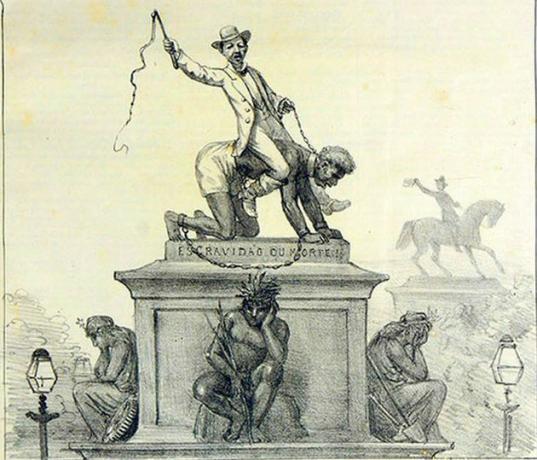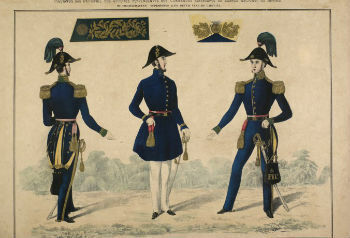The declaration of independence made by Dom Pedro I, on September 7, 1822, started a series of conflicts between governments and local troops still loyal to the Portuguese government and the forces that supported our new emperor. In Bahia, the end of Portuguese rule was already present in 1798, the year in which the Baiana Conjuration struggles took place.
In 1821, news of the Porto Revolution revived autonomist hopes in Salvador. The groups in favor of the end of colonization saw in the Portuguese liberal transformation an important step towards Brazil achieving its independence. However, Portuguese liberals restricted the wave of change to the Portuguese State, defending the reaffirmation of colonial ties.
Relations between the Portuguese and Brazilians began to intensify, promoting a real split between these two groups present in Salvador. Months before independence, political groups were articulated for and against this same issue. On February 11, 1822, a new government board administered by Brigadier Inácio Luís Madeira de Melo gave way to the disputes, as the new governor of the city declared himself faithful to Portugal.
Authoritatively using the troops at his disposal, Madeira de Melo decided to inspect the infantry, mostly Brazilian, in order to reaffirm its authority. The attitude taken gave rise to the first conflicts, which began on February 19, 1822, in the vicinity of Fort São Pedro. In a short time, the fights spread to the outskirts of the city of Salvador. Mercês, Praça da Piedade and Campo da Pólvora became the main stages of the war.
In this first wave of clashes, the Portuguese troops not only faced native military, but also invaded houses and attacked civilians. The most remarkable episode of disarray occurred when a Portuguese group invaded the Convento da Lapa and murdered the Abbess Sóror Joana Angélica, considered the first martyr of the Bahian uprising. Even with the nativist defeat, opposition to the government of Madeira de Melo increased.
During the festivities that took place at the São José procession, on March 21, 1822, nativist groups threw stones at representatives of the Portuguese power. In addition, a newspaper called “Constitucional” preached systematic opposition to the colonial pact and defended total local political sovereignty. On the other hand, new forces subordinated to Madeira de Melo arrived in Salvador, instigating the flight of part of the local population.
Do not stop now... There's more after the advertising ;)
Taking over other urban centers in the interior, the separatist movement gained strength in the villages of São Francisco and Cachoeira. Aware of these other outbreaks of resistance, Madeiro de Melo sent troops to Cachoeira. The arrival of troops encouraged local political leaders to mobilize the population in favor of the recognition of Prince Regent Dom Pedro I. This measure would verify the posture of the people in relation to the newly arrived Portuguese authorities.
Popular support for Dom Pedro I meant an affront to the authority of Madeira de Melo, which once again responded with arms to the desire of the local population. The Brazilians, disagreeing with the governor's violence, proclaimed the formation of a Conciliatory and Defense Board, instituted with the objective of fighting against the Portuguese power. The conflicts started in Cachoeira, took over other cities in the Recôncavo Baiano and also reached the capital Salvador.
The actions of the rebels gained greater articulation with the creation of a new government led by Miguel Calmon do Pin e Almeida. As pro-independence forces organized in the interior and city of Salvador, the Portuguese Court sent some 750 soldiers under the leadership of French General Pedro Labatut. The main struggles took place in the region of Pirajá, where independents and metropolitans opened fire against each other.
Due to the effective resistance organized by independence defenders and the support of troops led by the British military Thomas Cochrane, troops loyal to Portugal were defeated on July 2, 1823. The episode, in addition to marking Brazil's independence struggles, led to the creation of a holiday commemorating the so-called Independence of Bahia.
By Rainer Sousa
Graduated in History
Would you like to reference this text in a school or academic work? Look:
SOUSA, Rainer Gonçalves. "Independence of Bahia"; Brazil School. Available in: https://brasilescola.uol.com.br/historiab/independencia-bahia.htm. Accessed on June 27, 2021.



